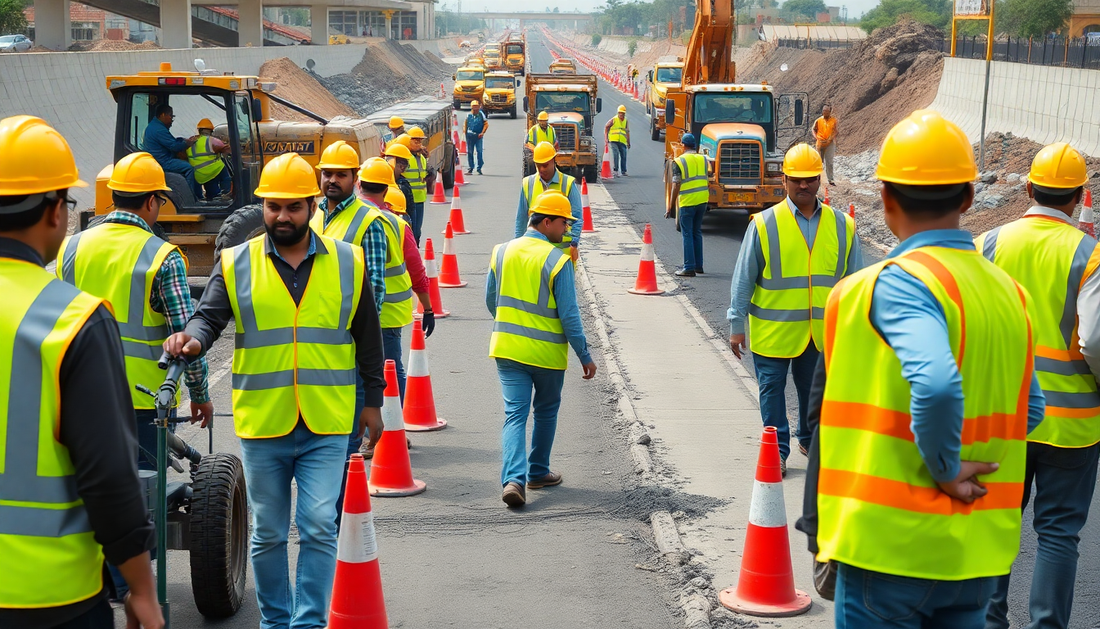
Staying Visible: When to Wear High Visibility Apparel on the Job
In the world of workplace safety, high visibility apparel plays a crucial role in protecting workers from the risks of low-light conditions, heavy traffic, and hazardous environments. Whether you're working on a construction site, maintaining roadways, or performing any task that requires you to be in close proximity to moving vehicles or machinery, donning the right high visibility gear can be the difference between going home safely or facing a potentially life-altering accident.
High visibility apparel comes in a variety of forms, including hats, shirts, jackets, and vests, each designed to enhance your visibility and keep you safe. These garments are typically made with bright, fluorescent colors and reflective materials that catch the eye, making it easier for others to spot you, even in low-light conditions.
But when is the right time to wear high visibility apparel? The answer is simple: whenever you're working in an environment where your safety could be compromised by poor visibility. This includes low-light conditions, such as early morning or late evening hours, as well as areas with heavy traffic, such as construction sites or roadside work zones. In these situations, the use of high visibility apparel can greatly improve your chances of being seen and avoid potentially dangerous collisions or incidents.
When selecting the right high visibility gear, it's important to consider the specific needs of your job. Hats with reflective strips can provide overhead visibility, while shirts and jackets with full-body coverage can offer more comprehensive protection. Vests, on the other hand, are a versatile option that can be worn over other clothing and easily layered for added warmth or visibility.
It's worth noting that the use of high visibility apparel is not just a recommendation – it's often a legal requirement. The Occupational Safety and Health Administration (OSHA) has specific regulations in place that mandate the use of high visibility clothing in certain work environments, and industry standards, such as those set by the American National Standards Institute (ANSI) and the International Safety Equipment Association (ISEA), provide guidelines for the design and performance of these garments.
Proper care and maintenance of your high visibility apparel is also crucial. Regularly cleaning and inspecting your gear can help ensure that it remains in good condition and continues to provide the level of visibility and protection you need. If any part of your high visibility apparel becomes worn or damaged, it's important to replace it promptly to maintain your safety.
In conclusion, wearing high visibility apparel on the job is not just a good idea – it's a necessary step in ensuring your safety and the safety of those around you. By understanding when to wear high visibility gear and choosing the right products for your specific needs, you can take an active role in protecting yourself and your colleagues from the risks of low-visibility work environments. So, the next time you head out to the job site, make sure to don your high visibility apparel and stay visible, stay safe.
The Importance of High Visibility Apparel
High visibility apparel is a critical component of workplace safety, especially in industries where workers are exposed to low-light conditions, heavy traffic, or other hazardous environments. These garments are designed to make the wearer more conspicuous, reducing the risk of accidents and injuries caused by poor visibility.
When to Wear High Visibility Apparel
There are several situations where the use of high visibility apparel is recommended or required:
Low-Light Conditions
Whether you're working early in the morning or late in the evening, low-light conditions can make it challenging for others to see you. High visibility apparel, with its bright colors and reflective materials, can help ensure that you're easily spotted, even in the darkest of environments.
Heavy Traffic Areas
Construction sites, roadside work zones, and other areas with a high volume of vehicle traffic can be particularly dangerous for workers. Wearing high visibility apparel can make you more visible to drivers, reducing the risk of collisions and other incidents.
Hazardous Work Environments
Certain industries, such as construction, manufacturing, and transportation, often involve working in close proximity to heavy machinery or other hazards. High visibility apparel can help ensure that you're easily seen by your colleagues, reducing the risk of accidents and injuries.
Choosing the Right High Visibility Gear
When it comes to high visibility apparel, there are several options to choose from, each with its own unique benefits:
Hats
High visibility hats, with their reflective strips and bright colors, can provide overhead visibility, making it easier for others to spot you in crowded or low-light environments.
Shirts and Jackets
High visibility shirts and jackets offer full-body coverage, ensuring that you're visible from all angles. These garments are often made with durable, breathable materials to keep you comfortable on the job.
Vests
High visibility vests are a versatile option that can be worn over other clothing. They're easy to put on and take off, making them a practical choice for workers who need to move quickly between different tasks or environments.
Legal Requirements and Industry Standards
The use of high visibility apparel is not just a recommendation – it's often a legal requirement. OSHA has specific regulations in place that mandate the use of high visibility clothing in certain work environments, and industry standards, such as those set by ANSI and ISEA, provide guidelines for the design and performance of these garments.
Maintaining Your High Visibility Apparel
To ensure that your high visibility apparel continues to provide the level of visibility and protection you need, it's important to properly care for and maintain your gear. This includes regularly cleaning your garments and inspecting them for any signs of wear or damage. If any part of your high visibility apparel becomes worn or damaged, it's important to replace it promptly to maintain your safety.
